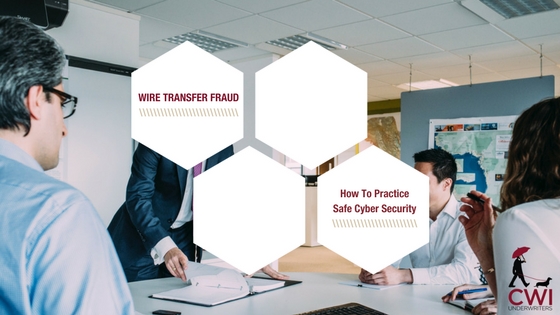Cyber Security Results Are In
In June 2016, the Federal Bureau of Investigation reported 22,143 cases involving compromised business e-mails in which hackers demanded request for about $3.1 billion in fraudulent charges from October 2013 through May 2016. Emphasis on cyber security protection is highly suggested, but you should understand a cyber liability policy will not cover all your bases.
The numbers have only grown since the FBI investigation of June 2016, hackers have become increasingly sophisticated and businesses are only now beginning to see how important Wire Transfer Fraud prevention is. Making a personal connection is a great strategy to prevent your business from an attack.
Making personal connections is crucial to all businesses, the end goal is to be memorable, enticing your customers to be returning long lasting clients. This client approach is the same that should be applied to Wire Transfer Frauds.
- Employees should be using their wire transfer prevention skills within their homes too. Cyber security needs to be reinforced in their personal environments to make for secure work environments.
- Getting to know others within your organization: Employees should be familiar with upper management. You, as a business owner, should be accessible to your employees in the event they receive an e-mail or even a phone call from “upper-management.” Hackers love to call the targeted employee pretending to be someone else within the organization or even pretending to be the client to make them feel secure about approving wire transfers. This usually happens as a secondary measure after an initial e-mail request has been sent.
- Demonstrate: Showing your employees how the skills they’ve learned for cyber-security at work can directly help them in their personal lives. In the video below, courtesy of OnGuardOnline.gov, it is seen how being able to identify a secure browser can help you when using public WIFI. The dangers of using public hotspots are also highlighted.




